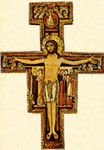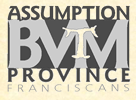Beginning Byzantine Catholic Lent 2007
This past Sunday evening, 18 February, we began Great Lent (also called “Great Fast”) in the Byzantine Catholic Church with Forgiveness Vespers. Unlike the Roman Catholic practice of receiving ashes on the forehead to begin Lent, Byzantine Lent begins quite simply in the dimly lit church. I had the privilege of joining the small community at St. George Melkite Catholic Church in Milwaukee, WI (just a few blocks north of Marquette University). As Byzantine Vespers continued, we heard various Scripture readings calling the people to wisdom by turning to God and praise of God. Toward the latter part of Vespers, we did several prostrations and metanies. Prostrations are what we frequently see among the Muslims for their daily prayers – on both knees with head touching the ground and the palms of the hands on the ground. Metanies (from the Greek, “metanoia”, or repentance) are profound bows with the sign of the cross (Byzantine style). At the end of the service, the officiating priest ceremoniously asked the congregation for forgiveness, and the congregation, in turn, asked the priest for forgiveness. Then we had a sign of peace in which each person approached another, including the priest, kissing him or her on each shoulder and saying, “Forgive me, brother/sister, for I am a sinner.” With that the Vespers was completed. It was a beautiful gesture of peace-making and reconciliation to begin the Lenten Fast.


